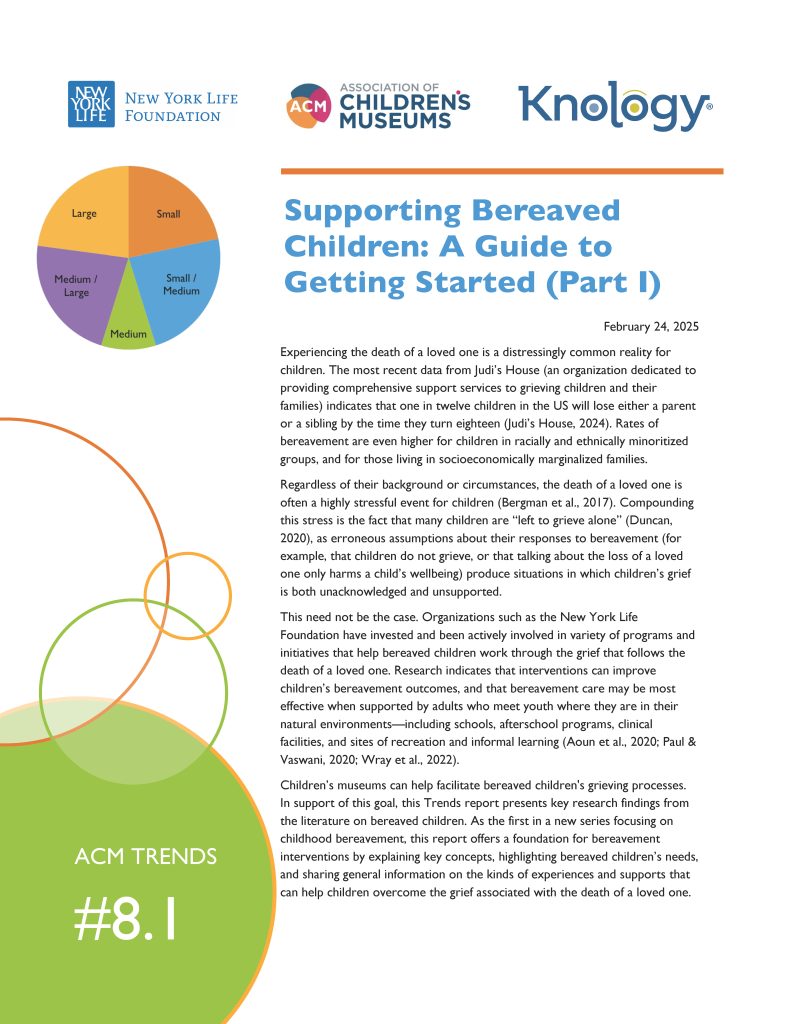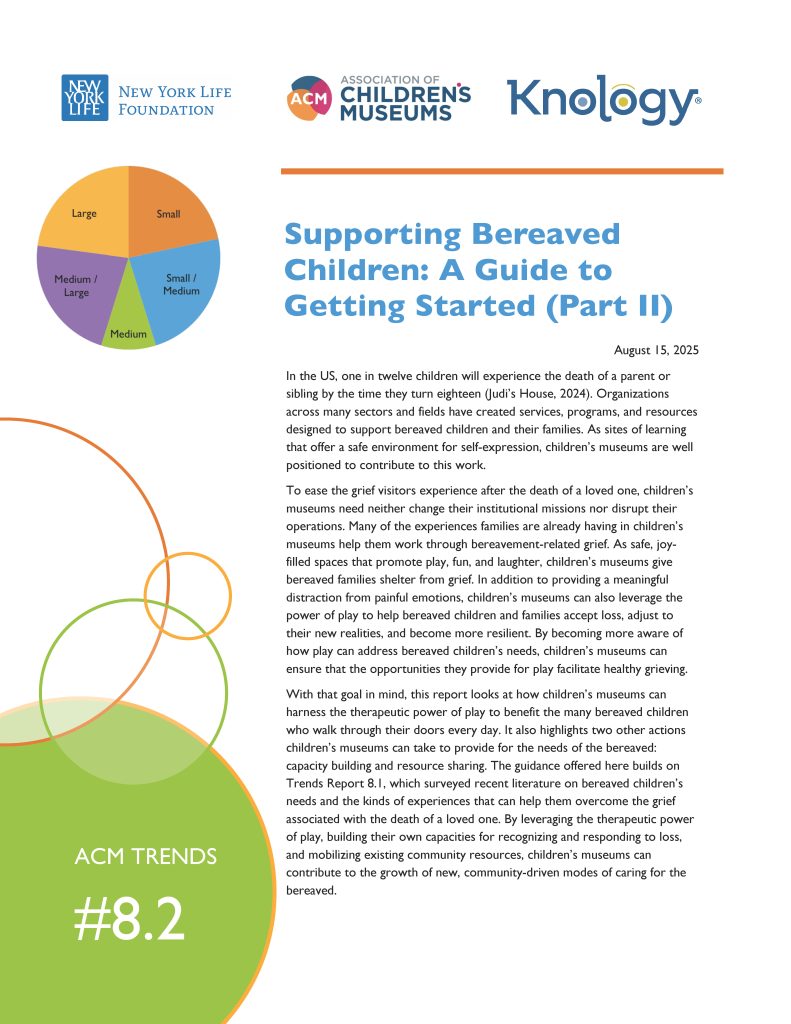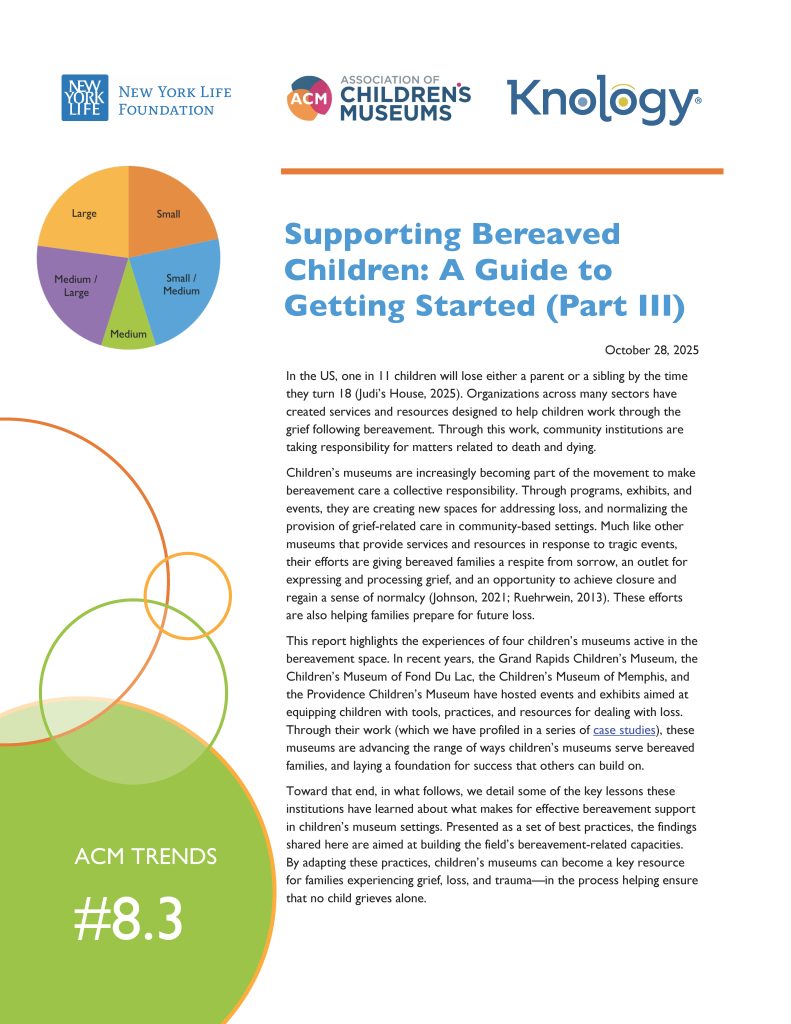
The resources on this page can help children’s museums care for the bereaved children and families who enter their doors every day. This library provides children’s museums with accessible materials that can be used for a number of different purposes, including:
• Staff training and capacity building
• Collaboration and partnering
• Program and exhibit design
• Community engagement
• Caregiver support
Looking for resources to share with children and families? Our Resource Library for Children and Families highlights recent additions to children’s bereavement media, focusing specifically on content created for those aged 0-8.
Know of something that should be here but isn’t? Contact Blythe Romano at Blythe.Romano@ChildrensMuseums.org and we’ll add it to our growing collection.
Whether you are new to offering grief/bereavement programming or you are looking for information to help you in existing initiatives, the following resources are our recommendation to get started. Additional resources are also available below.
Webinar
Everything You Always Wanted to Know About Grief, but Were Afraid to Ask
Handout
Five Signs a Grieving Child or Adolescent May Need Extra Help
Handout
How Children and Young People Grieve
Handout
Supporting Preschoolers Who are Grieving
Information
Grief by Age: Preschool Children (3 to 5)
Webinar
Art Therapy: How to Use Creative Expression for Grief Support
Activity
Emotions Map
Web Training
Talking with Children
Find a Grief Center Near You
Dougy Center provides a link of support programs via its worldwide directory.

This report presents key research findings from the literature on bereaved children. Offering a foundation for bereavement interventions, it explains key concepts, highlights bereaved children’s needs, and shares general information on the kinds of experiences and supports that can help children overcome the grief associated with the death of a loved one.

This report looks at how children’s museums can harness the therapeutic power of play to benefit the many bereaved children who walk through their doors every day. It also highlights two other actions children’s museums can take to provide for the needs of the bereaved: capacity building and resource sharing.

This report highlights the experiences of four children’s museums active in the bereavement space. Through their work (which we have profiled in a series of case studies), these museums are advancing the range of ways children’s museums serve bereaved families, and laying a foundation for success that others can build on.


